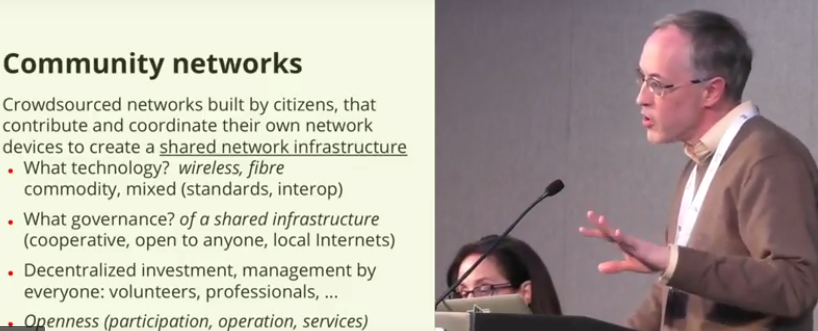Internet for everyone by everyone

The topic of the plenary session for the last IETF 101 in London was about "The Future of Internet Access", or how community networks, spectrum regulation and satellite links can enable the remaining 50% of the global population in developing their own network infrastructures.
During IETF 101 the GAIA WG representatives (Jane Coffin and Leandro Navarro as WG co-chairs, Steve Song and Jonathan Brewer) met and discussed the Internet Architecture Board about the obstacles for an open and public Internet.
The IETF 101 plenary session was introduced by Jane Coffin from the Internet Society. Leandro Navarro from netCommons (slides) introduced how the underserved and unconnected can develop their own networking infrastructures under the commons model of governance.
In summary, there is a need for an open Internet, and self-provision is an opportunity for citizens and small providers to cooperate to be effective in developing local networking infrastructures that provide regional coverage and services.
As netCommons has shown, community networks have demonstrated to be effective for helping in local socio-economic development, developing local connectivity, enabling the growth of local business, and supporting local resilience.
Community networks need diversity, standards, interoperability, commodity components, ways for incremental upgrading of the networks, and decentralised management, investment and governance. The IETF community can contribute to create this environment.
We firmly believe that connectivity for the next 50% of the global population will develop bottom-up. The research in netCommons and the discussions and work of the IRTF GAIA WG contribute to understand and achieve this.


